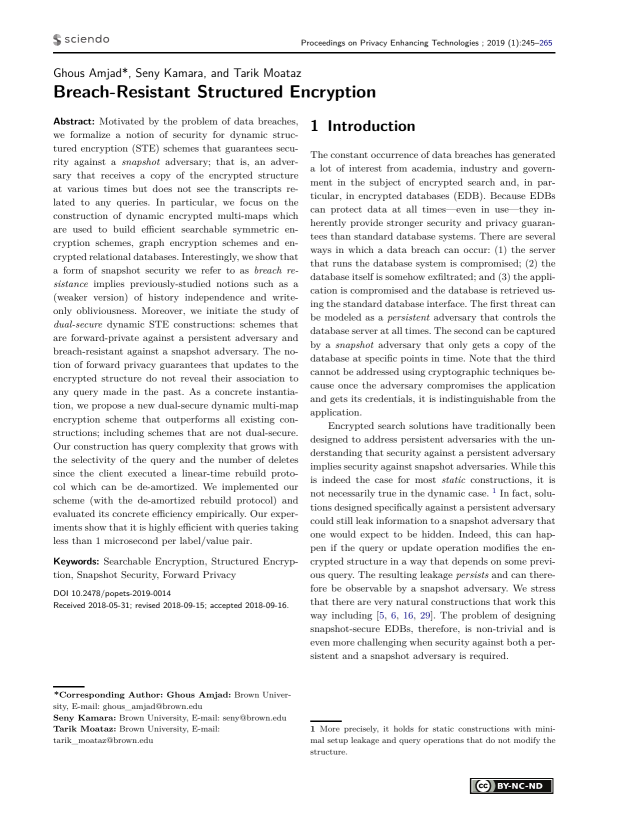Breach-Resistant Structured Encryption
Authors: Ghous Amjad (Brown University), Seny Kamara (Brown University), Tarik Moataz (Brown University)
Volume: 2019
Issue: 1
Pages: 245–265
DOI: https://doi.org/10.2478/popets-2019-0014
Abstract: Motivated by the problem of data breaches, we formalize a notion of security for dynamic structured encryption (STE) schemes that guarantees security against a snapshot adversary; that is, an adversary that receives a copy of the encrypted structure at various times but does not see the transcripts related to any queries. In particular, we focus on the construction of dynamic encrypted multi-maps which are used to build efficient searchable symmetric encryption schemes, graph encryption schemes and encrypted relational databases. Interestingly, we show that a form of snapshot security we refer to as breach resistance implies previously-studied notions such as a (weaker version) of history independence and writeonly obliviousness. Moreover, we initiate the study of dual-secure dynamic STE constructions: schemes that are forward-private against a persistent adversary and breach-resistant against a snapshot adversary. The notion of forward privacy guarantees that updates to the encrypted structure do not reveal their association to any query made in the past. As a concrete instantiation, we propose a new dual-secure dynamic multi-map encryption scheme that outperforms all existing constructions; including schemes that are not dual-secure. Our construction has query complexity that grows with the selectivity of the query and the number of deletes since the client executed a linear-time rebuild protocol which can be de-amortized. We implemented our scheme (with the de-amortized rebuild protocol) and evaluated its concrete efficiency empirically. Our experiments show that it is highly efficient with queries taking less than 1 microsecond per label/value pair.
Keywords: Searchable Encryption, Structured Encryption, Snapshot Security, Forward Privacy
Copyright in PoPETs articles are held by their authors. This article is published under a Creative Commons Attribution-NonCommercial-NoDerivs 3.0 license.

